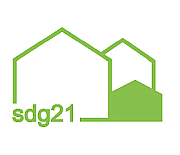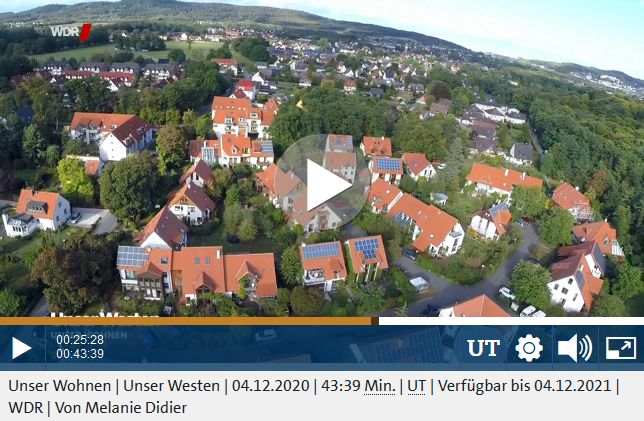Building products play an important role in the sustainability certification of buildings. After all, a large number of the criteria to be considered relate to their quality characteristics. To reduce the complexity of the necessary information, product labels can be helpful as independent proof of quality. With the new 2018 version of its certification system, the German Sustainable Building Council (DGNB) is introducing a procedure for the recognition of such product labels for the first time. For this, label providers must meet a number of requirements. Recognition can be based on three criteria within the DGNB system: responsible resource extraction, the avoidance of harmful and risky substances, and deconstruction and recycling friendliness. The first standards recognised by the DGNB are CSC, FSC, WOOD FROM HERE, Indoor Air Comfort Gold, PEFC and WiN=WiN Fair Stone.
Due to the complexity of issues and in order to support credibility, quality certificates for building products are often created and confirmed by product labels from standard-setting organisations. These are intended to help customers and planners to quickly and reliably assess whether the quality meets their own requirements.
In order to provide planners with further guidance for product selection in the context of sustainability certification, the DGNB has developed the label recognition procedure. "It is intended to help simplify the verification process when applying our certification system," explains Dr. Christine Lemaitre, Executive Director of the DGNB. "In addition, we want to specifically promote the dissemination of standards for products used in the construction sector with requirements that match in content, as in the DGNB system. We are concerned here with the transparent provision of information on important product properties, but also with supporting initiatives that are committed to sustainable development in their segment."
Holistic requirements for label providers
Currently, recognition is possible for the three criteria "Responsible resource extraction", "Risks for the local environment" and "Deconstruction and recycling friendliness". Depending on which criterion within the DGNB certification a label provider applies for, different content requirements apply, which are decisive for the DGNB quality levels in which recognition can take place.
The basis for the recognition is that the respective standard ensures that the requirements laid down in the criteria of the DGNB system are met by the certified products. In terms of content, this means, for example, that the extraction, mining and production of the raw materials used in the products are legal and free of child and forced labour. Or that certain limit values for the content of hazardous and harmful substances in the product are complied with.
In addition to such content-related requirements, there are formal requirements for the standard-setting organization and its underlying quality assurance processes. These include aspects such as the transparency and accessibility of basic information on the standard and the associated organization. They also include objectivity and independence, clear award regulations and control mechanisms, reference to applicable standards, and continuous further development of the standard.
"Particularly with regard to the topic of responsible sourcing, we want to use the new procedure to encourage construction product manufacturers to transparently demonstrate that minimum social and ecological standards are consistently complied with - especially in producer countries with less stringent legislation than in Germany," says Lemaitre. "This would be an important signal in a globalized world with very interconnected production chains."
First recognized standards
At the start of the process, the DGNB initially recognised six standards. These include the PEFC, HOLZ VON HIER and FSC timber labels. In addition, there is CSC for the concrete product group and WiN=WiN Fair Stone for natural stone. Recognition with these five standards relates in each case to the criterion "Responsible resource extraction", whereby products with a CSC certification in gold or silver are recognised in the medium quality level 1.2. The same applies to WiN=WiN Fair Stone certification. Products certified according to the standard of WOOD FROM HERE are recognized in the highest quality level 1.3. FSC and PEFC have different recognition levels for each of three different categories. For "FSC 100%" or "PEFC certified" (100%) the quality level 1.3 applies, for "FSC Mix" and "PEFC certified" (70-100%) the quality level 1.2. In addition, for "FSC Recycled" or "PEFC recycled" the quality level 2.2 applies, which is the highest achievable quality level for secondary raw materials.
In addition, the DGNB recognises the "Indoor Air Comfort Gold" label in the criterion "Risks to the local environment" as proof of the emission requirements described there. The recognition applies to various materials and components in each case in the highest quality level 4.
The possibility of obtaining recognition from the DGNB applies in principle to all providers of product labels that meet the requirements of the DGNB. After completion of the assessment, the label is included by the DGNB in a list of all recognised labels and the detailed assessment result is published on www.dgnb-system.de published. The test reports of the already recognised standards can also be found there. All documents for participation in the DGNB label recognition procedure are also available on the DGNB system website.
DGNB itself continues not to certify building products
"It is important to emphasize that the sustainability quality of building products is not only measured by the criteria considered in the context of DGNB label recognition," explains Lemaitre. The DGNB system describes requirements for building products in a wide range of criteria, for example with regard to life cycle assessment. Manufacturers can achieve different quality levels with their products in the respective criteria and thus make a positive contribution to the certification result of a building project. The label recognition procedure supports this approach by simplifying the verification of some essential quality features in the context of certification.
Even with the newly launched procedure, the DGNB remains true to itself in a key characteristic in dealing with building products. "The DGNB system is impact-oriented and focused on evaluating the overall performance of a building," says Lemaitre. "For building products, this means they should always be considered in the context of the whole building, as only the correct use of a product can ensure its desired impact." This is also a key reason why the DGNB still does not certify building products itself.
PM of the DGNB from 7.5.2018
Keywords: Procurement, DGNB, Wood construction, Sustainable management, Certification & Labels



